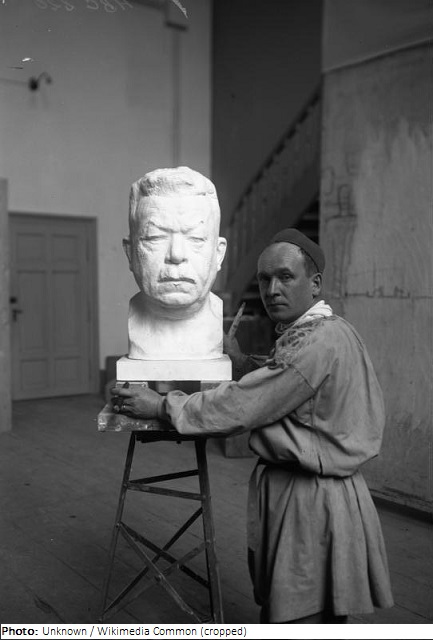Bernhard Bleeker

Biographical information
| Roles | Referee |
|---|---|
| Sex | Male |
| Full name | Johann Bernhard Maria•Bleeker |
| Used name | Bernhard•Bleeker |
| Born | 26 July 1881 in Münster, Nordrhein-Westfalen (GER) |
| Died | 11 March 1968 in München (Munich), Bayern (GER) |
| NOC |  Germany Germany |
Biography
Bernhard Bleeker first began an apprenticeship as a stonemason in Münster. From 1899 he studied at the Academy of Fine Arts in Munich. There he made the acquaintance of Adolf von Hildebrand, whose work strongly influenced him. From 1900 Bleeker worked as a stonemason before becoming an assistant at the academy there in 1903.
Shortly thereafter, he received his first public commission, a fountain with a figure of St. Michael. In 1908, he first received public recognition for the multi-figure sculpture Reichtum and a statue of Prince Regent Luitpold. In the same year, he declined an appointment to the Düsseldorf Academy of Art. In 1910-13 he undertook study trips to France and Italy.
In 1912 Bleeker was a co-founder of the New Munich Secession. After serving in World War 1, he again declined an appointment, this time to the Berlin Art Academy. In 1919 he finally received a call to the Academy in Munich, where he became a full professor in 1922. In the years that followed, he created war memorials and other monuments, primarily in Munich but also in other Bavarian cities.
Bleeker received numerous awards, including the Bavarian Order of Maximilian, and was appointed a member of the Prussian Academy of Arts and later of the Academy of Fine Arts in Vienna.
Bleeker had gained great recognition through his monuments since the 1930s. A member of the NSDAP since 1932, he became caught up in the maelstrom of National Socialist indoctrination. In 1937 he also accepted a commission for a bust of Adolf Hitler and in 1944 for a monument to August Neidhardt von Gneisenau in Posen. After the extensive destruction of his studio and apartment in the last years of the war, he moved to Teisendorf in Upper Bavaria. This earned him the reputation of a “Nazi sculptor” in the post-war period. In 1945 he was initially relieved of his teaching position at the Academy in Munich. In 1948 he was rehabilitated and returned to Munich. He continued to receive commissions for fountain designs and portraits.
Bleeker is considered one of the main representatives of the so-called Munich School of Sculpture, an important portrait sculptor as well as a representative of neoclassical monumental sculpture. Influenced by Greek archaism, he designed his sculptures strictly tectonically, yet seeking optimal unity. Only rudimentary influences of Art Nouveau and German Expressionism became effective. His main importance lay in the field of portrait busts, where he succeeded in impressive character studies, among others of Friedrich Ebert for the Reichstag in Berlin and of Richard Wagner for the Walhalla near Regensburg. Bleeker also devoted himself to funerary sculpture and created numerous medals. As a painter, he oriented himself on Impressionism and painted mainly portraits and interiors, occasionally also landscapes and figure paintings. Among his designs for glass paintings, the one from 1934 for the Augsburg Cathedral stands out.
Referee
| Games | Sport (Discipline) / Event | NOC / Team | Phase | Unit | Role | As | |
|---|---|---|---|---|---|---|---|
| 1928 Summer Olympics | Art Competitions |  GER GER |
Bernhard Bleeker | ||||
| Sculpturing, Medals And Reliefs, Open (Olympic) | Final Standings | Judge | |||||
| Sculpturing, Statues, Open (Olympic) | Final Standings | Judge |